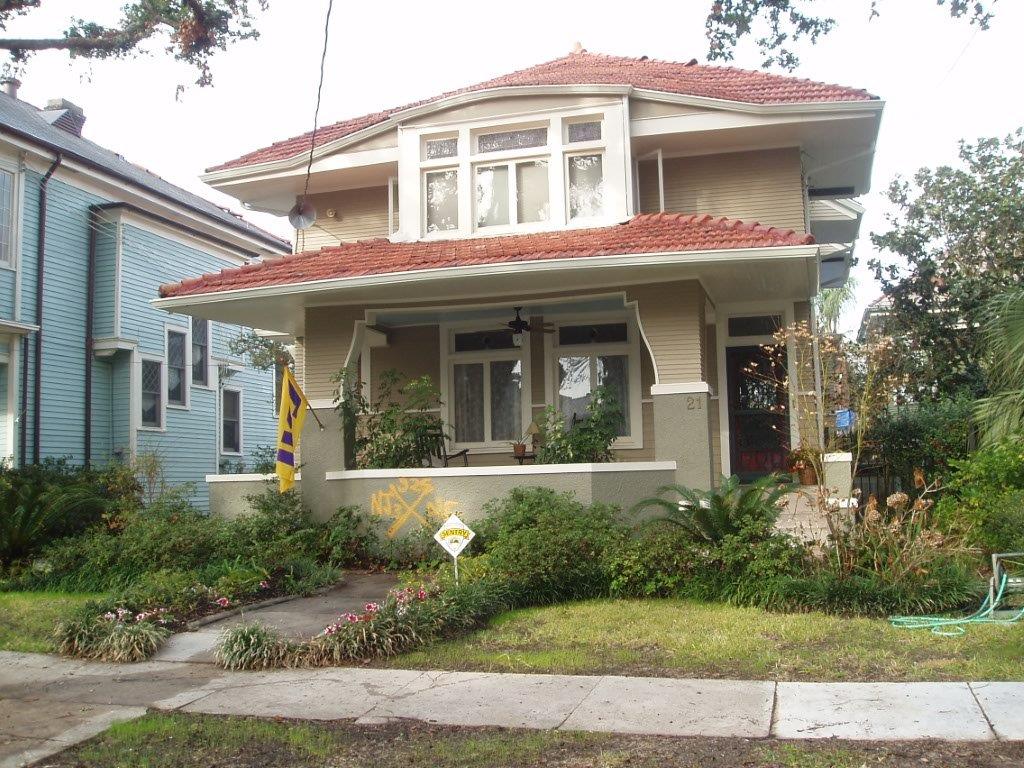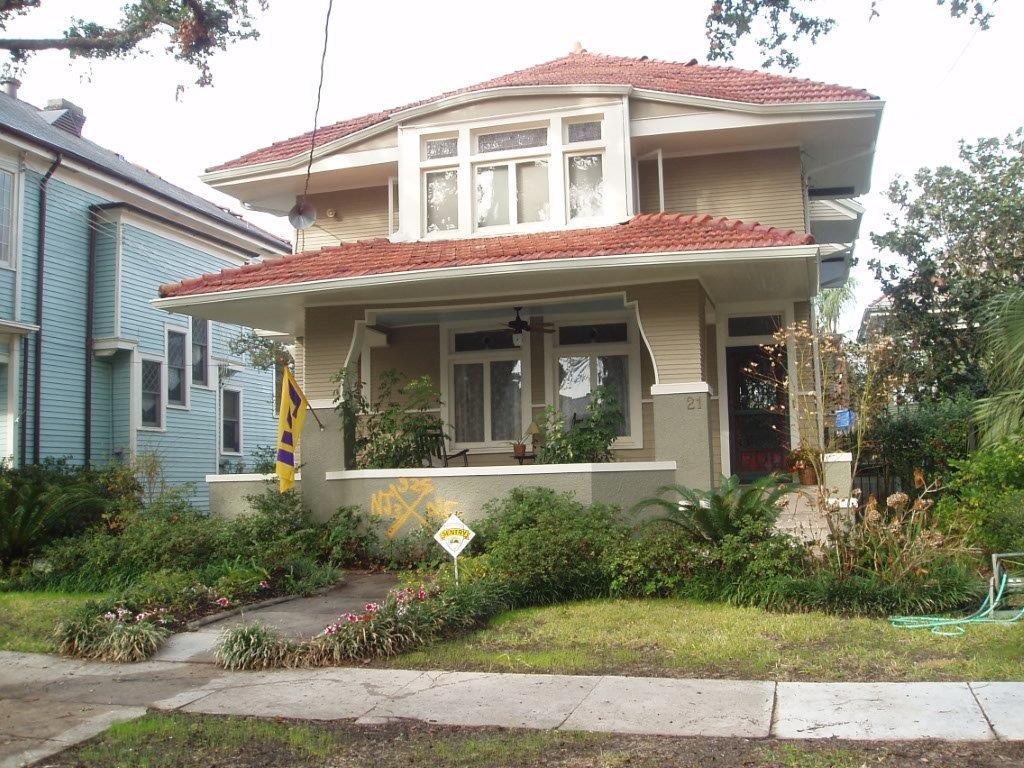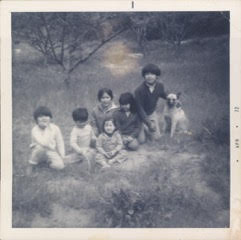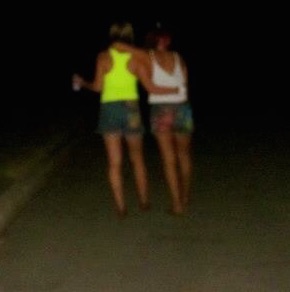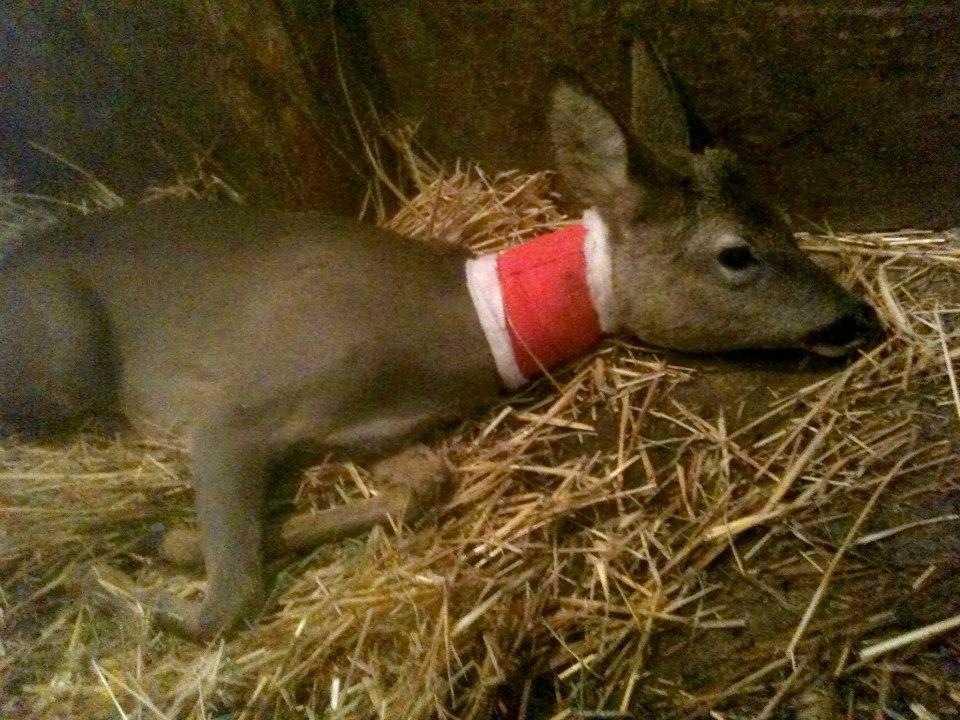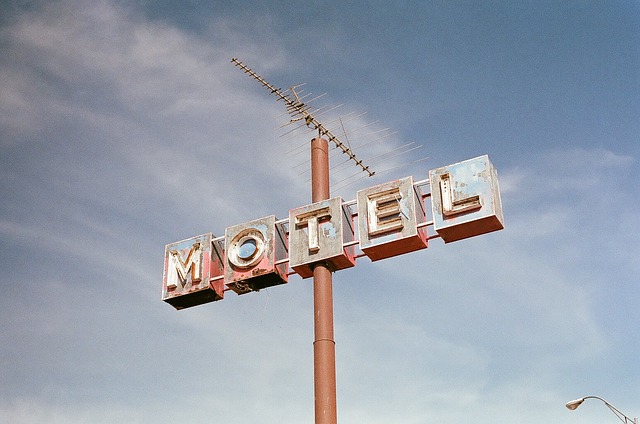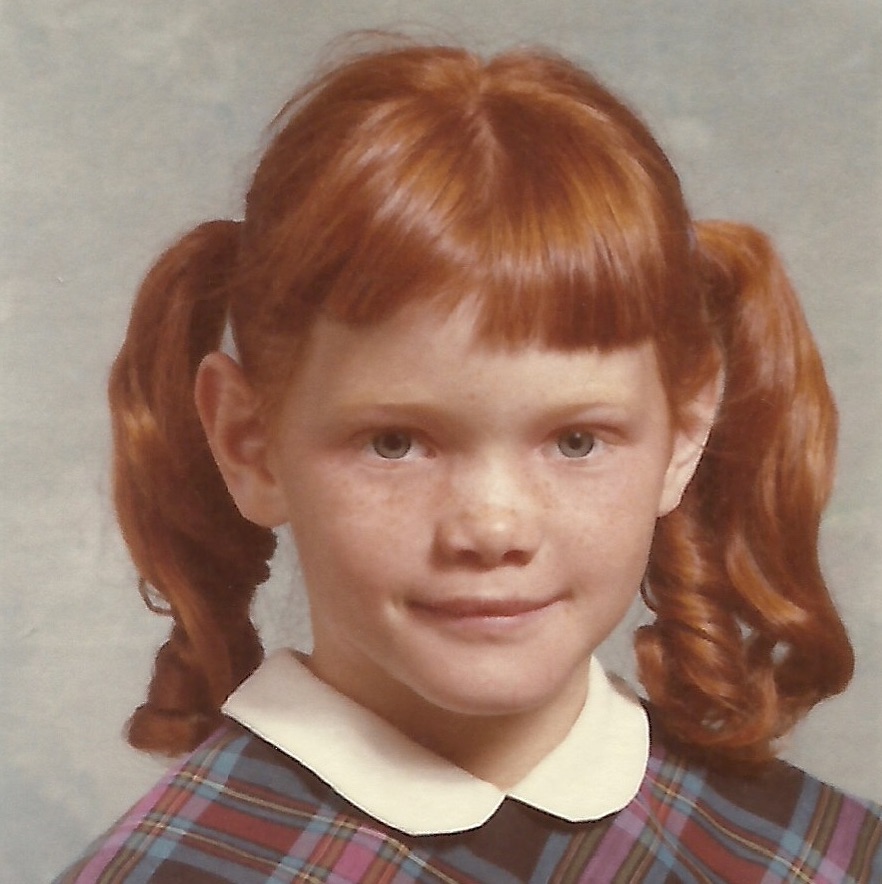The temperature and relative humidity hovered in the mid-90’s, normal readings for August in New Orleans. But that's where any pretense of normality ended. It was a few days past my sixtieth birthday in August 2006, and I stood in muck up to my knees in Bayou Metairie, reaching into the black, opaque water to pull out debris that had been submerged for a year. Volunteers from Common Ground were waist deep in the murky water. Bare-chested, college-aged guys wielded chain saws to free tangled tree limbs.
The worn sneakers on my feet and the thin, disposable latex gloves on my hands provided little protection from what might lie beneath the surface. Like a glacier leaves till, flood waters also deposit rubble in their wake. I'd seen refrigerators on roof tops, the remains of a car in a tree, houses that had floated from foundations and come to rest in the middle of neighborhood streets.
In August of 2005, from the safety of our friends’ home in Ville Platte, Louisiana, my husband Edmund and I watched television coverage as Hurricane Katrina pounded New Orleans and the Gulf Coast. Our twenty-six-year-old son, Matthew, had decided to ride out the storm at our home with his girlfriend Jennie rather than evacuate. He had emergency supplies and felt that our one hundred year-old Craftsman Bungalow would weather this storm as it had all others in the past century.
We spoke with him by phone late Monday night after Katrina had passed. "The damage isn't too bad," he said. “Power’s out, chimney’s collapsed, and the big magnolia's lying against the back door, but the roof and windows are secure. The street's completely blocked with fallen oak limbs. We'll try to clear it so people can drive through. See you back home in a couple of days.”
Early Tuesday morning, while we walked in our friends’ pasture and discussed our return home, Edmund’s phone rang. It was Matthew. “The landline is dead, and my cell's dying. There’s rising water in the street.” Then the call failed, as did our attempts to call him back.
All day Tuesday, my husband and I watched television coverage as New Orleans filled with lake water through the failed levee system. People were stranded on rooftops and interstate overpasses. Some swam or waded through treacherous flood waters in search of rescue. For many, rescue didn't arrive soon enough.
We saw the Superdome, a shelter of last resort, overflowing with people who had had no means of evacuation and who were pleading for food, water, assistance.
An aerial view of Tad Gormley Stadium, a half mile from our house, showed flood water reaching the crossbars of the football goalposts. We strained to see the extent of flooding beyond that, in the direction of our home, but could not. The long afternoon stretched toward evening, and our phones remained silent. No word from our son since the water had begun to rise.
Finally, a call came through. Matthew! He had borrowed a phone from a neighbor who had also sheltered at home. He said our immediate neighborhood, which was built on a slight ridge formed by centuries of silt deposits before levees restricted the flow of the Mississippi River, held about two to four feet of water. Like most of the homes on our block, ours was built on a raised chain wall foundation and sat four feet off the ground. Only the basement had flooded.
A reconnaissance ride in our kayak, however, revealed to Matthew and Jennie the extent of the flooding. Our neighborhood was a sandbar in a city that had become a lake. People paddled the streets in canoes, kayaks, and pirogues. The entire city was paralyzed. There were rumors of violence. Sewage backed up. Garbage and debris floated in the flood waters.
They learned that helicopters were picking up survivors in City Park and dropping them on dry land close to the interstate in Metairie. Buses would be there to drive everyone to safety. They decided to wade to the park at dawn on Wednesday to be airlifted out.
Matthew called Wednesday evening from the Metairie apartment of a woman who had offered them overnight shelter. They had waited all day by the interstate as hundreds of people streamed into the staging area. Not one bus had shown up to meet the evacuees. Matthew and Jennie would attempt to make alternate plans and call us early Thursday morning with details.
We were up at dawn expecting his call. Ten o'clock, noon, no call from Matthew. The minutes dragged. Finally, at two-thirty Thursday afternoon, our phone rang. They were safe! They had been able to contact Jennie's father who worked for an oxygen supply company, and he had arranged a ride in truck that was coming to New Orleans to deliver emergency supplies. The driver would meet them at a designated spot after his delivery and drop them in Baton Rouge at a friend's house. “I’m sorry I put you through all this worry” were the most understated and welcome words I had ever heard.
Edmund and I spent another few days in Ville Platte making plans for our immediate future. Our niece found us a house to rent in her neighborhood in Denham Springs, Louisiana, and we moved there in early September. Matthew moved in with us. Two weeks later, our son Todd and his wife, Trish, came to live with us. They had evacuated to Mobile, Alabama, to stay with our middle son, Jeb, in his home. Matthew, Todd, and Trish -- all educators -- were in a holding pattern to see when or if their schools would reopen.
Most of the employees of my husband's engineering firm had lost their homes and were scattered across the country. The office building was severely damaged, and the city had no services. Edmund and his partner temporarily relocated what was left of the firm to Mandeville, a short drive across Lake Pontchartrain from New Orleans, but a four-hour round-trip commute on I-12 from Denham Springs.
Through dial-up email and sporadic cell phone service, I connected with friends who had lost their homes. Most were wrestling with the decision of whether or not to rebuild in New Orleans. My eighty-three year old aunt and my cousin, who had lived one mile from the Seventeenth Street Canal levee failure in Lakeview, had lost everything. They were relocating to Athens, Georgia.
Every night Edmund and I watched the news and saw the wreckage of our hometown. We listened as authorities speculated that it would take more than a decade for the city to rebuild, if it could rebuild. The naysayers pontificated about a failed city that wasn't even worth saving. New Orleans was closed to everyone but essential personnel, and the mayor had ordered citizens to stay away.
Like many of our friends, we began to contemplate the "stay or leave" question. I had recently retired, and Edmund was planning to retire in a couple of years. With the uncertain future of the city and his company, he wondered if he should stop working sooner. I searched the internet to find the perfect place to live, some place above sea level, away from hurricanes and floods. Anything seemed possible. Nothing felt right.
A burning eighteen wheeler and a wedding invitation from our nephew Mark proved to be the catalysts that spurred us to action.
One night Edmund arrived home an hour later than usual. “An eighteen wheeler burning on I-12,” he said as he dropped his keys onto the ice chest we used as an end table. He flopped down in the papasan chair we had resurrected from our niece’s basement, and I handed him a glass of wine.
We had always lived no more than ten minutes from work, and I knew the drive to Mandeville each day was wearing him down. Most of the transport trucks moving east and west across south Louisiana travel the strip of I-12, north of Lake Pontchartrain between Slidell and Baton Rouge. Because the Twin Span of I-10 across the lake had been knocked out by the storm, all traffic took the more northerly 1-12 route. Add to that the thousands of New Orleanians who had been displaced north and west of the lake, putting more cars on the road, and you have the formula for the perfect storm of traffic disasters. Collisions, overturned trucks, and smoldering vehicles were not uncommon.
“The ‘save-the-date’ for Mark’s wedding came in the mail today. We should plan to go.”
“I don’t even want to think about driving to Atlanta,” he said as he flipped on the television to watch the nightly reports of doom and devastation.
Lying in bed that night, I broached the subject again. “We could fly to Atlanta for the wedding, and then rent a car and drive to North Carolina.” We had both enjoyed vacations hiking and whitewater rafting in the Smokies.
“This isn’t exactly a good time for a vacation, you know.”
“The wedding’s in February. Things will have settled down by then. I thought we could look at houses to buy.”
“Move to North Carolina?”
“Maybe, or maybe a second home, a place to live if this happens again. We don’t have to decide now.”
The city reopened for those who had places to live in the beginning of October. Edmund and I came back part-time, at first spending only a couple of nights a week. We were still without potable water, working toilets, electricity, natural gas and phone service; there were no grocery stores. Edmund worked in Mandeville during the day, and I stayed at our house -- cleaning mold, clearing debris, and battling the mice that had taken residence in our pantry. I took long, lonely walks with our dog Dingo in the thirteen-hundred-acre wasteland across the street that had been our beautiful City Park.
A spectral silence cloaked the city. Without electricity, the constant underlying hum of electric motors was muted. The bird population had been decimated, so bird songs were absent. Children’s voices were no longer a part of the auditory landscape. In the pitch darkness of a deserted city without power and under an eight o’clock curfew, the only night sound was that of the National Guard patrolling our streets.
I ventured into Metairie where stores were open to buy gasoline, groceries, ice, and other supplies. My shopping trips involved driving through the grey, desolate neighborhood of Lakeview -- past the shell of my childhood home, the remains of the home in which we had raised our three boys, and the silt covered homes of friends and family. Past the ravaged, debris-ridden ballpark where my young sons had played baseball. Past our children's elementary school, horizontal water lines on the exterior walls recording the flood's crest and gradual ebb. Every shopping excursion ended in tears.
By November, a few neighbors had returned. We had electricity and working toilets, but we were still under a boil water directive. Edmund and I volunteered in City Park, which had lost ninety percent of its employees and all of its equipment. He used our small lawn mower to cut grass along the park's perimeter. I replanted and maintained an entry garden with friends.
In December, we came back to live in New Orleans full-time. Natural gas service had been restored, giving us the ability to heat our home, take hot showers, and cook. Our post office opened for limited mail pick-up. A few shops and restaurants in non-flooded areas of the city resumed business. City Park miraculously staged a very scaled down version of its annual holiday event, Celebration in the Oaks. Like the native New Orleanians that we are, we joyfully celebrated that and every other sign of rebirth in the city.
The New Year brought new hope. Some schools reopened, and children were once again part of our community. Churches, corporations, colleges, nonprofits, and private individuals flooded New Orleans with generous donations of time and money. Edmund and I, with the help of friends, hosted dinners for visiting church groups in our home. We continued to work in City Park, no longer alone but with corporate groups who supplied equipment, funding for supplies, and optimism. I planted marsh grass in the wetlands with the Coalition to Restore Coastal Louisiana.
We flew to our nephew’s wedding in February and drove up to North Carolina to meet with a realtor, but our hearts weren’t in it. We visited pristine mountain cabins with cathedral ceilings and walls of windows overlooking mountain vistas. We imagined life in this place where everything worked as it should. We thanked the realtor and told him we’d be back in touch. As our flight approached Louis Armstrong International Airport, we looked down on our city, blue tarps covering the damaged rooftops of the houses left standing.
“We don’t fit in there,” Edmund said. “We’re from New Orleans. This is where we belong.”
Paul Simon performed on the closing day of New Orleans Jazz and Heritage Festival in May 2006. We stood shoulder to shoulder with close friends and strangers from around the world on land that, only eight months earlier, had been inundated by the flood. The crowd swayed to the music as Simon strummed backup guitar for Irma Thomas' and Allen Toussaint's cathartic rendition of “Bridge Over Troubled Water.” Yes, we were weary, and tears were in our eyes, but like Simon's “silver girl,” our time had come to shine, our dreams were on their way.*
I walk with a different dog in City Park now, along Bayou Metairie. A white egret wades at the shoreline and plucks a perch from the shallow edge. I pause to see live oak limbs draped in Spanish moss bowing to kiss the face of the water. A pair of mute swans drifts past. Six turtles sun on a log, and one, solitary, great blue heron stands sentry on a stone bridge. The contaminated bayou of 2006 fades to a distant memory.
I dredged more than debris from this water so many years ago. Along with tree limbs, downed wires, and hubcaps, I pulled the strength, courage, and determination I would need to persevere. While there was never an “ah-ha” moment, I realized that leaving New Orleans would be like abandoning a loved one on life support. There was no choice, really. If we, the offspring of this city, didn’t care enough to save it, who would? My ancestors had lived in New Orleans through generations of hurricanes. I refused to be the quitter who took the easy way out.
*Bridge Over Troubled Water, 1970Paul Simon, Columbia Records
Kathleen Schrenk received a B.S. from Louisiana State University and taught middle school English and science for twenty years. She is a member of the Society of Children’s Book Writers and Illustrators and has recently completed her first middle-grade novel, A Dog Steals Home. Her short story "Cold Spring" is a 3rd place winner in the 2015 Tuscany Prize Contest. Both works are set in New Orleans where she lives with her husband.
